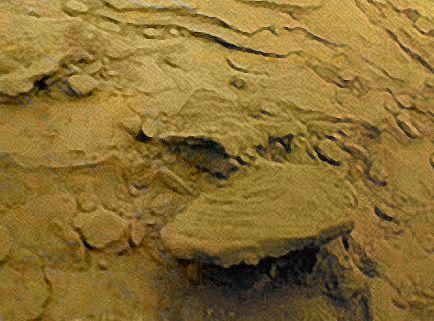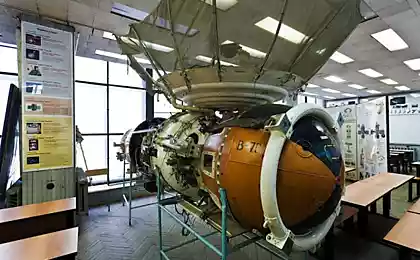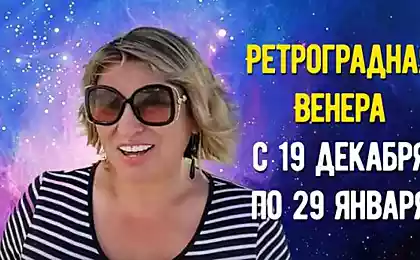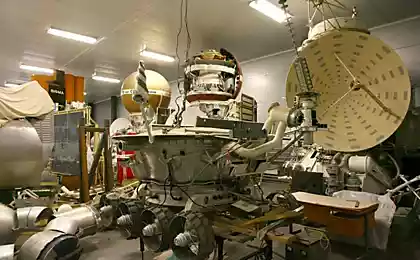1433
Pictures of the planet Venus
Venus is the second planet from the Sun planet in the solar system.
Venus - the inner planet, and in Earth's sky is not removed from the Sun on 48 °.
Venus - the third brightest object in the sky and its brightness in the sky is second only to the brilliance of the sun and moon.
Venus is one of the planets known to mankind since ancient times.

The size plaeneta Venus is quite close to Earth. The radius of the planet is 6051, 8 km (95% of the Earth), the mass of Venus - 4, 87? 1024kg (81, 5% of the Earth), the average density venery- 5, 24 g / cm .. Acceleration of gravity on the planet Venus is 8 87 m / s ?, the escape velocity on Venus slightly less than the Earth - 10, 4 km / s.

Atmosphere of Venus consists of carbon dioxide (96%) and nitrogen (about 4%). Water vapor and oxygen contained in it in miniscule amounts (0, 02 and 0%, 1%). The pressure at the surface planetv reaches 93 atm (1 atm not ground), and the temperature at the surface as many as more than 450 degrees Celsius!

The reason for such a high temperature on Venus is the greenhouse effect produced by a dense carbon dioxide atmosphere. The density of the atmosphere of Venus is only 70 times the density of Earth's atmosphere. It is interesting that, despite a slow rotation of the planet, the temperature difference between day and night side of the planet there is no unnecessarily high thermal inertia of the atmosphere.

Cloud cover is located at 30 - 60 km and consists of several layers. Their chemical composition has not been established. It is assumed that they may be present droplets of concentrated sulfuric acid, sulfur compounds and chlorine.

Venus is easy to recognize, as the brightness of it is much greater than the brightest stars. A feature of Venus is its smooth white color. Venus, as well as Mercury, does not depart at the sky at a great distance from the sun. In moments of elongations Venus can get away from our star to a maximum of 48 °. Like Mercury, Venus has periods of morning and evening visibility: in ancient times believed that the morning and evening Venus - different stars. Venus - the third brightest object in our sky. In periods of visibility of its luster in the maximum at about m = -4, 4.

In a telescope, even a little, you can easily see and observe the phase change of the visible disk of the planet. They were first observed in 1610 by Galileo. The atmosphere on Venus opened Lomonosov June 6, 1761 (New Style).








via source
Venus - the inner planet, and in Earth's sky is not removed from the Sun on 48 °.
Venus - the third brightest object in the sky and its brightness in the sky is second only to the brilliance of the sun and moon.
Venus is one of the planets known to mankind since ancient times.

The size plaeneta Venus is quite close to Earth. The radius of the planet is 6051, 8 km (95% of the Earth), the mass of Venus - 4, 87? 1024kg (81, 5% of the Earth), the average density venery- 5, 24 g / cm .. Acceleration of gravity on the planet Venus is 8 87 m / s ?, the escape velocity on Venus slightly less than the Earth - 10, 4 km / s.

Atmosphere of Venus consists of carbon dioxide (96%) and nitrogen (about 4%). Water vapor and oxygen contained in it in miniscule amounts (0, 02 and 0%, 1%). The pressure at the surface planetv reaches 93 atm (1 atm not ground), and the temperature at the surface as many as more than 450 degrees Celsius!

The reason for such a high temperature on Venus is the greenhouse effect produced by a dense carbon dioxide atmosphere. The density of the atmosphere of Venus is only 70 times the density of Earth's atmosphere. It is interesting that, despite a slow rotation of the planet, the temperature difference between day and night side of the planet there is no unnecessarily high thermal inertia of the atmosphere.

Cloud cover is located at 30 - 60 km and consists of several layers. Their chemical composition has not been established. It is assumed that they may be present droplets of concentrated sulfuric acid, sulfur compounds and chlorine.

Venus is easy to recognize, as the brightness of it is much greater than the brightest stars. A feature of Venus is its smooth white color. Venus, as well as Mercury, does not depart at the sky at a great distance from the sun. In moments of elongations Venus can get away from our star to a maximum of 48 °. Like Mercury, Venus has periods of morning and evening visibility: in ancient times believed that the morning and evening Venus - different stars. Venus - the third brightest object in our sky. In periods of visibility of its luster in the maximum at about m = -4, 4.

In a telescope, even a little, you can easily see and observe the phase change of the visible disk of the planet. They were first observed in 1610 by Galileo. The atmosphere on Venus opened Lomonosov June 6, 1761 (New Style).








via source























